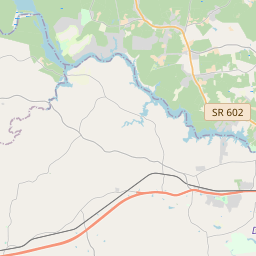The Civil War Years
Historical marker location:






The Banks House
April 12, 1861: The Civil War begins with the Confederate attack on Fort Sumter, located in South Carolina's Charleston Harbor.
April 15, 1861: President Abraham Lincoln issues a call for 75,000 volunteers to serve in the Union Army to suppress the rebellion.
May 24, 1861: The first major land battle, known as the First Battle of Bull Run (or First Battle of Manassas), takes place in Virginia. It ends in Confederate victory.
September 17, 1862: The Battle of Antietam in Maryland becomes the bloodiest single-day battle in American history, with heavy casualties on both sides. The Union forces, commanded by General George McClellan, manage to halt Confederate General Robert E. Lee's advance into Union territory.
January 1, 1863: President Lincoln issues the Emancipation Proclamation, declaring that all slaves in Confederate-held territories are to be set free. However, the proclamation does not immediately free all slaves in the United States.
July 1-3, 1863: The Battle of Gettysburg in Pennsylvania takes place, resulting in a significant Union victory and inflicting heavy casualties on Confederate forces. It marks a turning point in the war.
November 19, 1863: President Lincoln delivers the Gettysburg Address, emphasizing the principles of liberty, equality, and the preservation of the Union.
April 9, 1865: General Robert E. Lee surrenders to Union General Ulysses S. Grant at Appomattox Court House in Virginia, effectively ending the Civil War.
April 14, 1865: President Lincoln is assassinated by John Wilkes Booth while attending a play at Ford's Theatre in Washington, D.C.
May 10, 1865: Confederate President Jefferson Davis is captured, signaling the collapse of the Confederate government.
December 6, 1865: The Thirteenth Amendment to the United States Constitution is ratified, officially abolishing slavery throughout the country.
While this timeline provides an overview of key events, it is important to note that the Civil War spanned over four years, from 1861 to 1865, and encompassed numerous battles, campaigns, and political developments that shaped the course of American history.
Jamestown, Virginia, was the first permanent English settlement in the Americas. It was founded in 1607 and served as the capital of Virginia until 1699.
During the American Revolution, Dinwiddie County played a significant role. It was home to several notable patriots, including American Revolutionary War hero, Peter Francisco. The Battle of Five Forks, a critical engagement in the Siege of Petersburg, also took place in Dinwiddie in 1865. This battle marked a turning point in the Civil War, leading to the fall of the Confederate defenses and ultimately, the end of the war.
Following the war, Dinwiddie County experienced a period of growth and development. Agriculture, particularly tobacco farming, became the primary industry in the county, and the construction of railroads further spurred economic growth. The county's natural resources, such as timber and clay, contributed to the establishment of industries like logging and brickmaking.
In more recent times, Dinwiddie County has continued to evolve. The county has made efforts to preserve its historical heritage, with several buildings and landmarks listed on the National Register of Historic Places. Additionally, the county has embraced modern development, attracting businesses and industries while maintaining its rural charm. Today, Dinwiddie County stands as a testament to the rich history and resilience of its past, while looking towards a promising future.
Dinwiddie County Timeline
This timeline provides a glimpse into the major events and milestones that have shaped the history of Dinwiddie County, Virginia.
- 1752 - Dinwiddie County, Virginia, is established from parts of Prince George County and Brunswick County.
- 1754 - The county is named in honor of Robert Dinwiddie, the Lieutenant Governor of Virginia.
- 1755-1763 - Dinwiddie County is affected by the French and Indian War, with various skirmishes and conflicts taking place in the region.
- 1775-1783 - The county experiences the American Revolutionary War, with residents actively involved in the struggle for independence.
- 1803 - Dinwiddie County is enlarged by adding territory from neighboring counties.
- 1830s - The Southside Railroad reaches Dinwiddie County, facilitating transportation and economic growth in the area.
- 1861-1865 - Dinwiddie County is heavily impacted by the American Civil War, with several battles and a significant military presence in the area.
- 1890s - The county experiences a decline in agricultural productivity, leading some residents to seek opportunities elsewhere.
- 1930s - The Great Depression brings hardships to Dinwiddie County as unemployment rates rise and the economy struggles.
- 1940s-1970s - Dinwiddie County sees a gradual shift toward a more diversified economy, with increased industrial development and improved infrastructure.
- Present - Dinwiddie County continues to develop and grow, with a focus on preserving its history while also embracing new opportunities for economic prosperity.